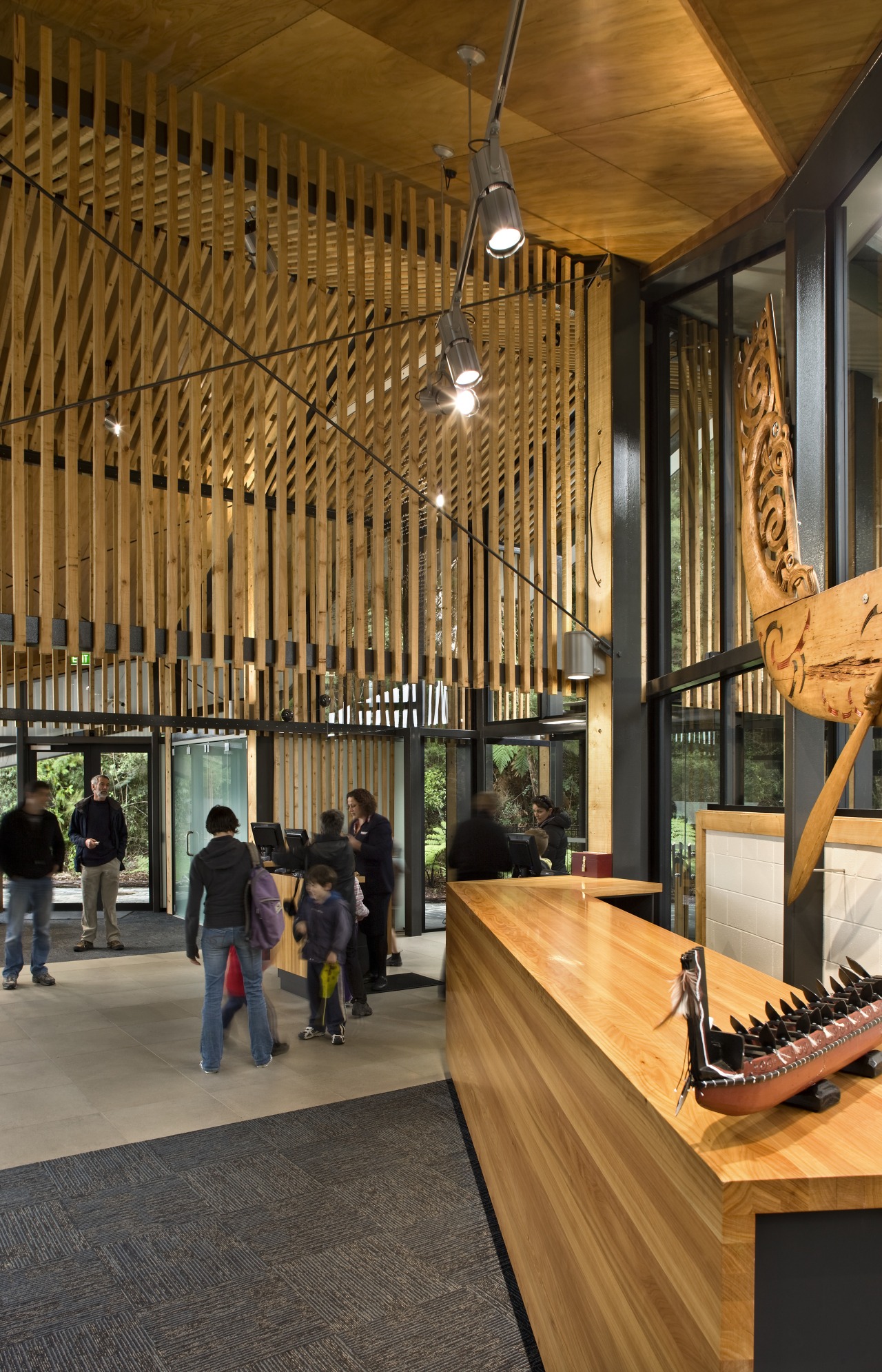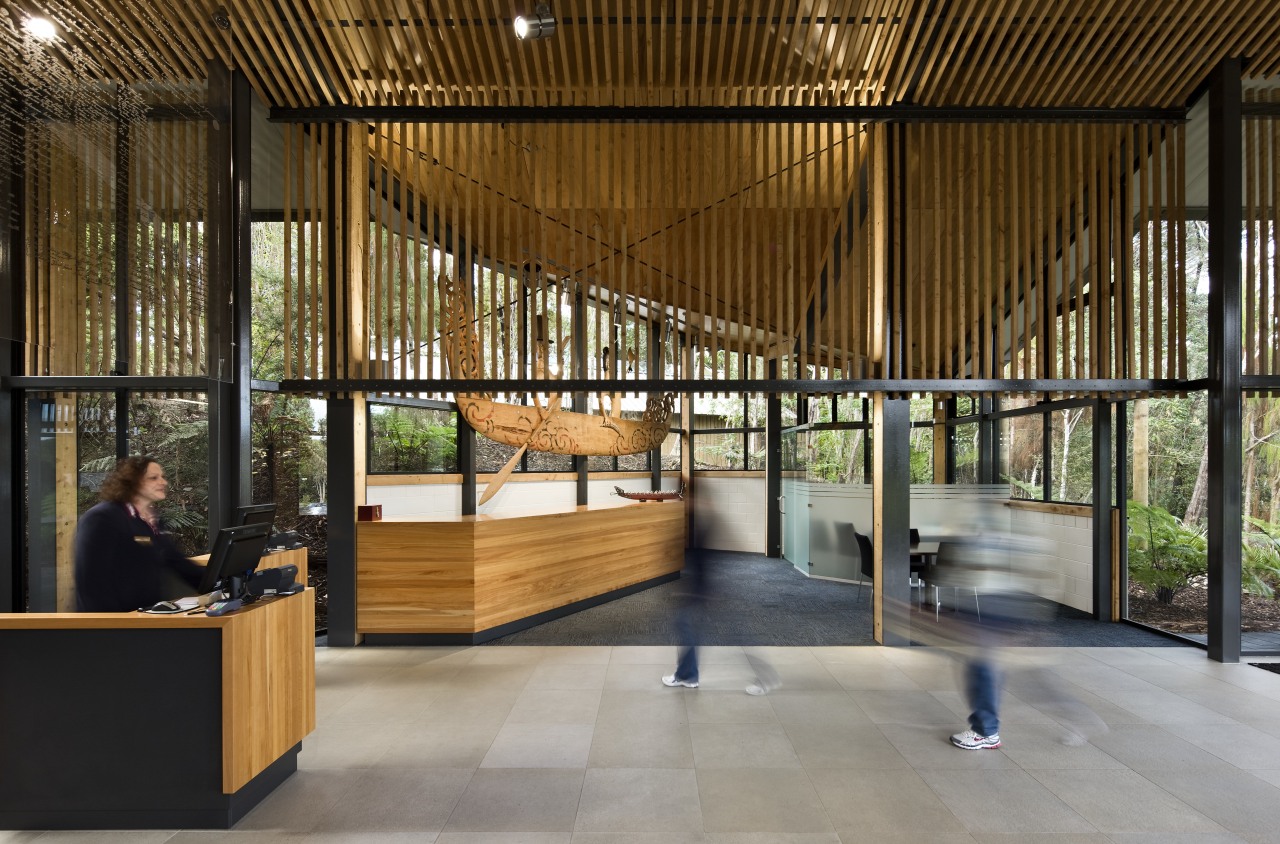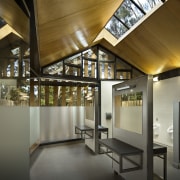Cultural JOURNEY
Marking the entrance to New Zealand's pre-eminent historic site, the new Waitangi Treaty Grounds gateway building is an evocative wayfinder

Emphasising natural materials and iconic Maori design, the new gateway building to the Bay of Islands grounds where the Treaty of Waitangi was first signed offers an appropriate welcome.
The steel-structured, slatted wood and glass reception building, or gateway, forms the key part of a wider project undertaken on the grounds by HB Architecture. Grant Harris was project architect.
"The gateway structure references the traditional form of Te Whare Runanga, the meeting house built at Waitangi in 1940. A large gabled roof covers a front porch area with an open-plan internal space," says Harris. "A significant feature of the building is the whare form suspended under the main roof.
"This central, defining form directs the river of people that visit this landmark site from the covered entrance through to the path at the rear of the building that leads on to the visitor centre. To the left and right of the hanging form, small wings provide side spaces, or eddies, where people can step out of the central pedestrian flow."

The slatted wood element allows natural light to filter into the space and connects to the tree-filled environment surrounding the gateway building.
The gabled form references the visitor centre, by architect John Scott, which has a similar profile. This is again echoed by HB Architecture in new toilet facilities, set on a side path near by.
"The facilities building consists of a large gabled roof over a simple post-and-beam structure, with glass walls covering half the exterior," says Harris. "All solid wall surfaces are in tiled concrete block, as are the floors. A skylight runs along the ridge of the roof, so light floods into the building.
"Along the path side of the structure a minimal vertical timber screen acts as a privacy filter."

The gabled roof, slatted wood, tiled floors and Fijian kauri ply ceilings common to the new buildings draw them together as a family. Harris also stripped out existing toilets in the visitor centre, replacing them with a cafe facility.
Natural, inviting and filled with light, the new gateway building provides an appropriate first impression for Kiwis and international visitors alike.
Credit list
Owner
Interior design
Civil engineer
Roofing
Ceiling
Architect
Builder
Quantity surveyor
Cladding
Glazing
Floor tiles, gateway and facilities buildings
Vanities, facilities building
Story by: Charles Moxham
Home kitchen bathroom commercial design
Classic looks, contemporary efficiency
Diving into nature
Personality plus





